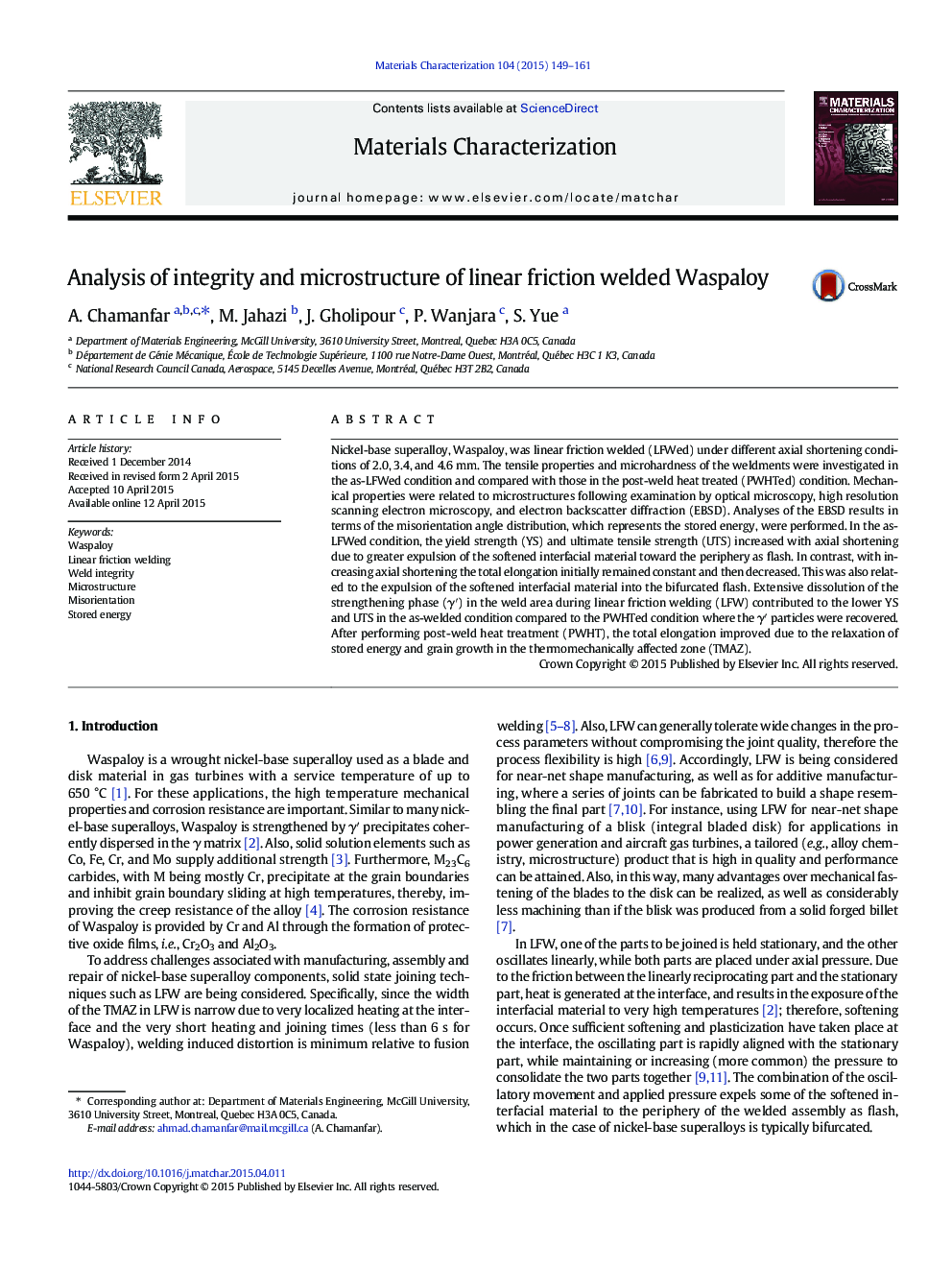| Article ID | Journal | Published Year | Pages | File Type |
|---|---|---|---|---|
| 1570912 | Materials Characterization | 2015 | 13 Pages |
Abstract
Nickel-base superalloy, Waspaloy, was linear friction welded (LFWed) under different axial shortening conditions of 2.0, 3.4, and 4.6 mm. The tensile properties and microhardness of the weldments were investigated in the as-LFWed condition and compared with those in the post-weld heat treated (PWHTed) condition. Mechanical properties were related to microstructures following examination by optical microscopy, high resolution scanning electron microscopy, and electron backscatter diffraction (EBSD). Analyses of the EBSD results in terms of the misorientation angle distribution, which represents the stored energy, were performed. In the as-LFWed condition, the yield strength (YS) and ultimate tensile strength (UTS) increased with axial shortening due to greater expulsion of the softened interfacial material toward the periphery as flash. In contrast, with increasing axial shortening the total elongation initially remained constant and then decreased. This was also related to the expulsion of the softened interfacial material into the bifurcated flash. Extensive dissolution of the strengthening phase (γâ²) in the weld area during linear friction welding (LFW) contributed to the lower YS and UTS in the as-welded condition compared to the PWHTed condition where the γⲠparticles were recovered. After performing post-weld heat treatment (PWHT), the total elongation improved due to the relaxation of stored energy and grain growth in the thermomechanically affected zone (TMAZ).
Related Topics
Physical Sciences and Engineering
Materials Science
Materials Science (General)
Authors
A. Chamanfar, M. Jahazi, J. Gholipour, P. Wanjara, S. Yue,
